The Seasonic PRIME Titanium PSU (650W, 750W, 850W) Review: Mythical Performance
by E. Fylladitakis on April 7, 2017 9:00 AM ESTExternal Appearance
The three Seasonic PRIME PSUs that we are reviewing today are almost identical physically, sharing the exact same design and proportions. One can only tell the difference between the models from either the sticker with the electrical specification of the PSU that is found at the top of the chassis, or from the number of connectors at the front side of the units. Do note that the chassis is 170 mm long, which is a bit longer than that of a typical ATX PSU and might be incompatible with some cases, especially ultra-compact designs.
Seasonic is trying to have the PRIME units aesthetically standing out of the crowd mainly by adding chrome parts on the sides and bottom of the chassis. Aesthetics are a subjective matter but we believe that the designer made the PRIME units a bit too shiny, when obviously the concept was to have them looking classy. The sides of the chassis are embossed, with a small vent opening that faces the rear of the unit. These vents are insignificantly small and their direction suggests that they are most likely just decorative elements rather than actual thermal improvements.
The rear side of the PSUs is perforated, with an elongated honeycomb pattern that has been optimized for reduced air drag (i.e. noise). There is a typical on/off switch next to the AC cable connection, and also a push button that turns the hybrid fan mode on or off. With the setting on, the fan will not start until the thermal control circuit defines that it is necessary for the cooling needs of the unit.
The front side of the PSUs are littered with the numerous connectors for their modular cables. Each unit has a different number of connectors that corresponds exactly to the number of cables they come with. The connectors are grouped into three categories; one just for the ATX cable, one for the Molex/SATA cables and one for the PCI-E and CPU cables. All of the PCI-E/CPU connectors are compatible with both of the CPU and PCI-E cables.
Internal Design
All three of the units that we are reviewing today are using the same exact fan, the Hong Hua HA13525M12F-Z. It initially appears to be a common 135 mm fan but has a fluid dynamic bearing (FDB) engine, which combines the low noise operation of the sleeve bearing with the longevity of ball bearing engines. The fan has a maximum rotational speed of 1800 RPM.
Seasonic is the designer and a manufacturer that actually also supplies their products to other brands, so there is no hidden OEM behind the PRIME Titanium units, they are entirely of their own design and production. The three PRIME Titanium units that we are reviewing today are also sharing the same exact internal design. As a matter of fact: many of the components are identical, with the only actual difference being the rating of some of the primary components. The heatsinks are identical, as are most of the secondary side capacitors.
The secondary capacitors are either supplied by Nippon Chemi-Con and Nichicon (Solid state), or Nippon Chemi-Con and Rubycon (electrolytic). The filtering stage also is identical between the three units and consists of six Y capacitors, three X capacitors and two filtering inductors. A surge suppressing MOV is also present. All three units are even using the same two primary conversion bridges, which are comically oversized for the power requirements for any of the three units. The two bridges in each of the units could, in theory, handle up to 4.5kW with a mere 90V AC input. Differences occur with the two APFC capacitors at the primary side: the 650W model is using 2×400V/470μF capacitors, the 750W model one uses 400V/450μF plus one 400V/560μF, and the 850W model uses one 400V/470μF plus one 400V/680μF.
Seasonic PRIME Titanium 650W - Internal View
Technologically, the topology of the PRIME units is not alien by any of today’s standards. The primary inversion stage is a full bridge supported by an LLC resonant converter, and the secondary conversion stage is a synchronous rectifier that generates the 12V line, with DC-to-DC circuits for the secondary voltage lines. Seasonic managed to reach 80Plus Titanium efficiency standards simply by the proper selection of high quality active parts that have minimal thermal losses and cooperate well with each other. The flip side of this is the cost, which we will get to later.
Seasonic PRIME Titanium 750W - Internal View
Seasonic PRIME Titanium 850W - Internal View


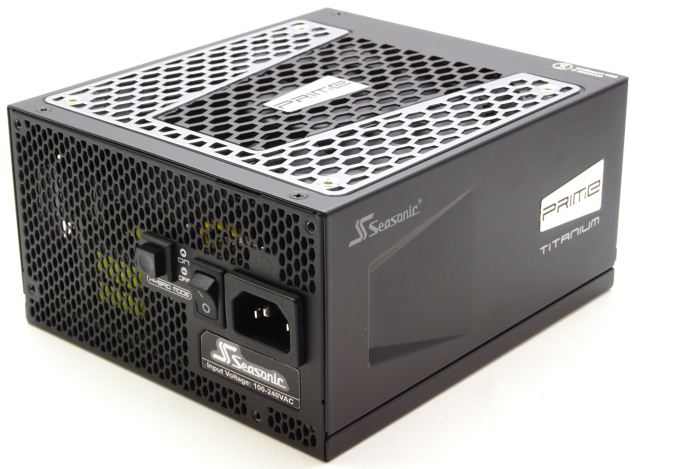
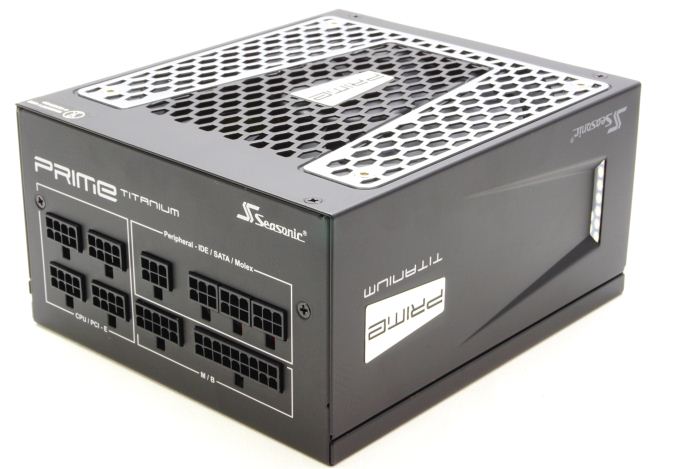
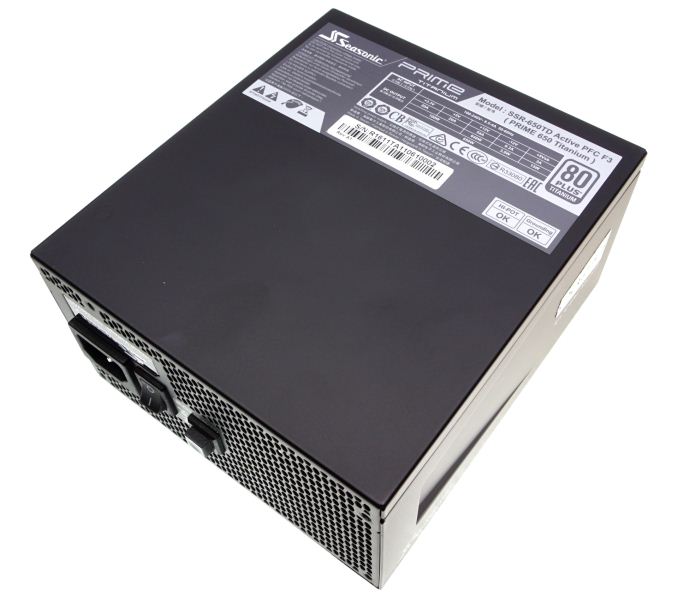

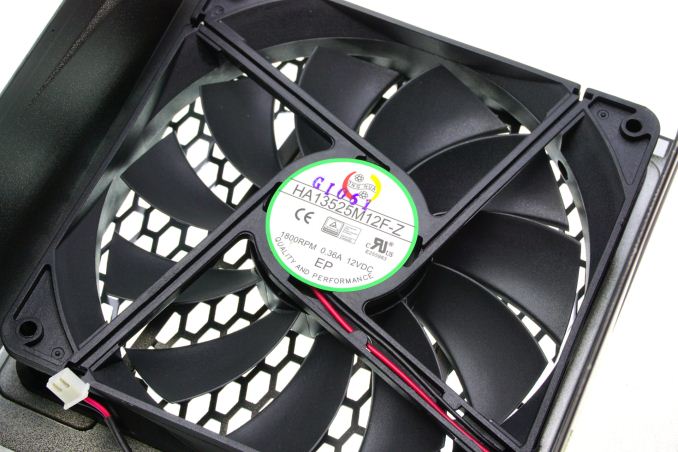
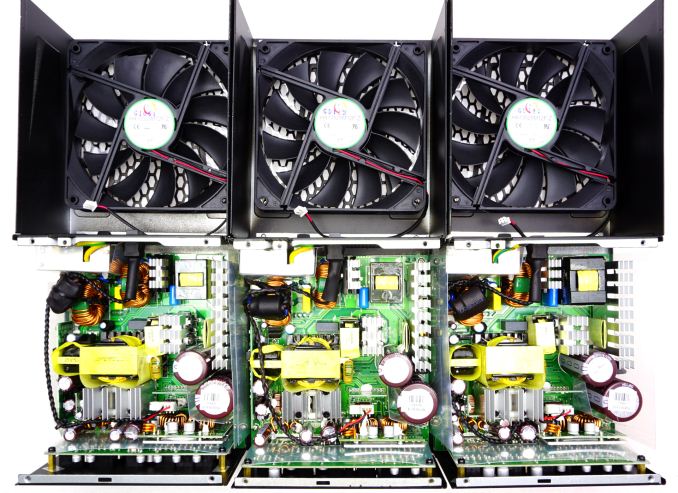
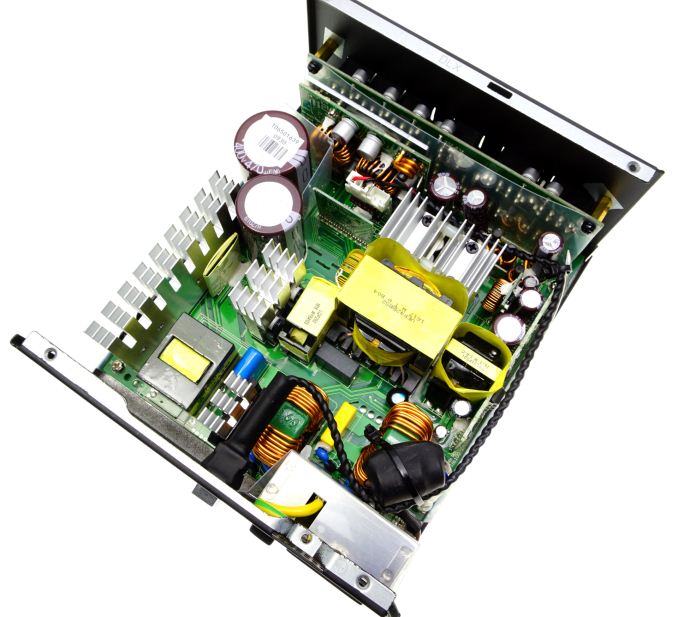
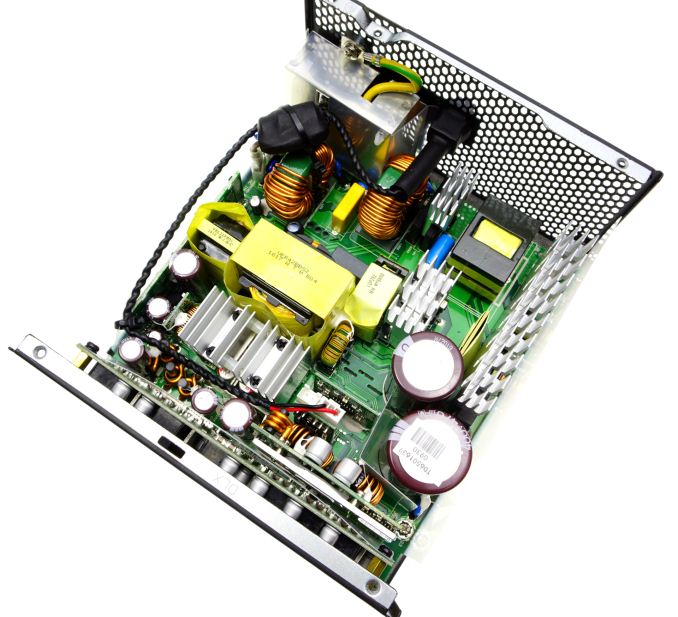
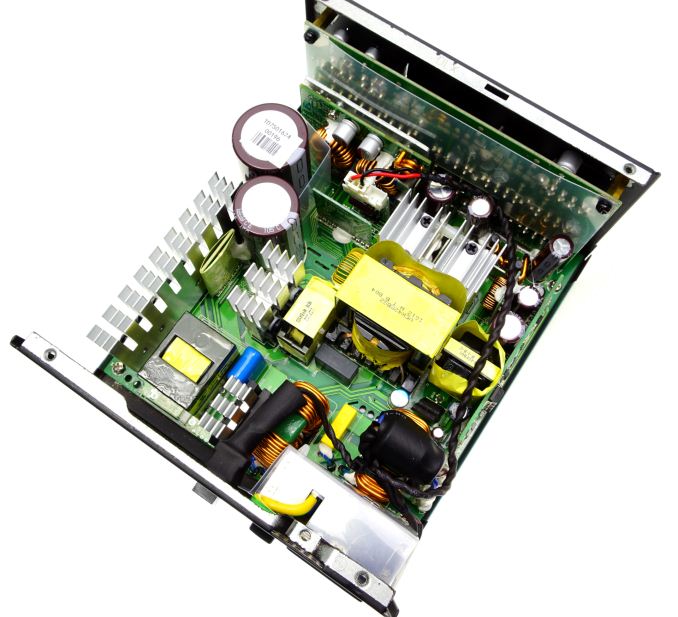
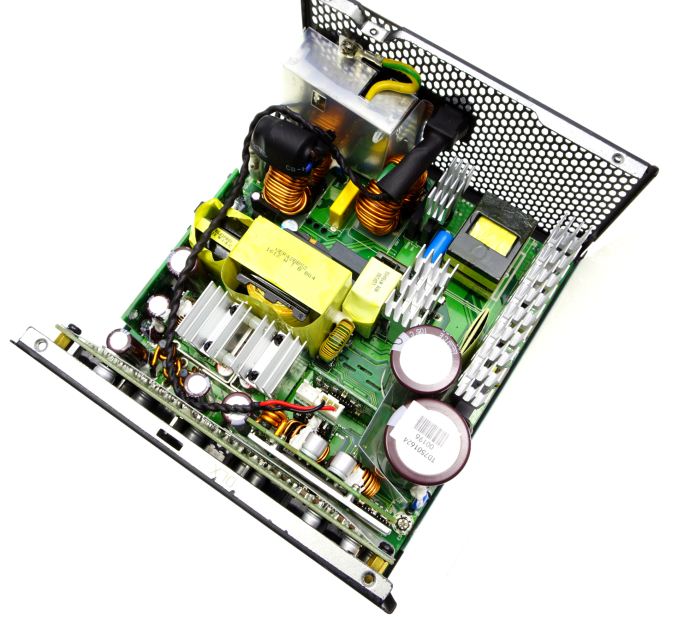
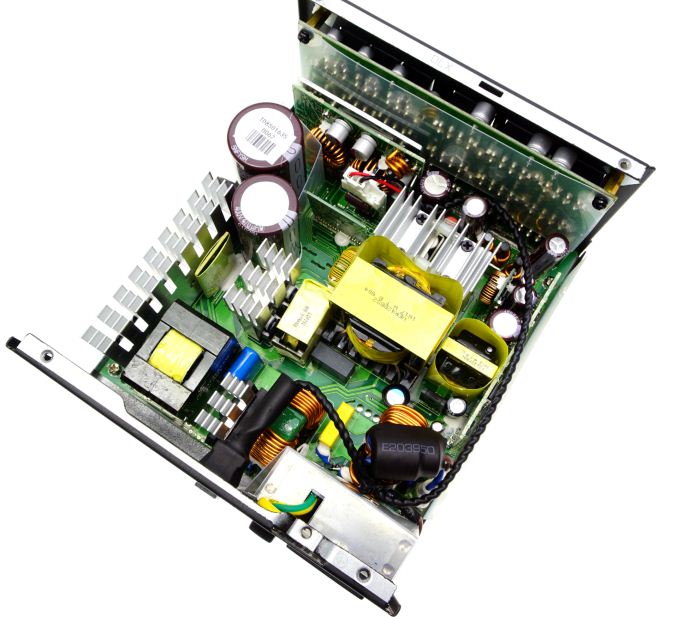
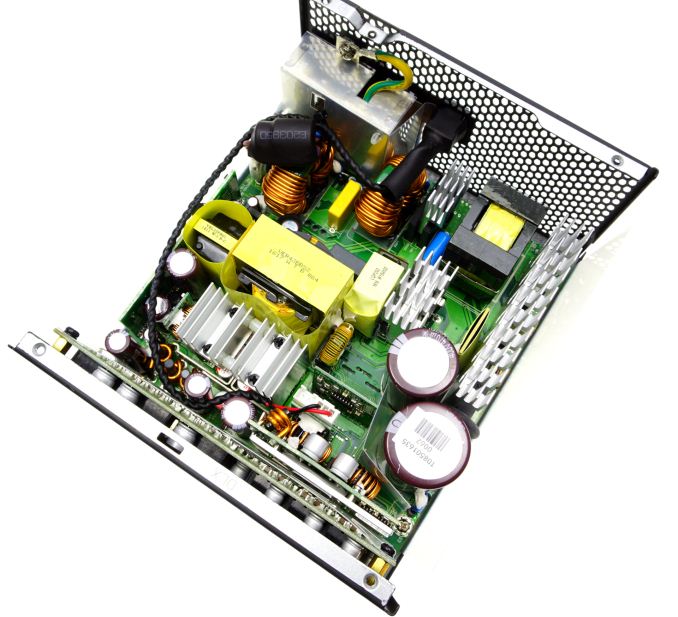








86 Comments
View All Comments
nagi603 - Friday, April 7, 2017 - link
Let's hope their eventual redesign won't be as bad as the X-series redesign was. I've had two fail (1 blew on first power-on, the other after half a year) while my original X-400 is still happy as ever after running out of its warranty, regularly driving ~400W of components.Freakie - Saturday, April 8, 2017 - link
In contrast, my 2nd gen X-750 has run like a champ for the last 4 years. My system also doesn't pull more than 450W so I keep the PSU power draw in the sweet spot which is why I got the 750W instead of the 650W.feelingshorter - Saturday, April 8, 2017 - link
I had the X-650, bought when it first came out in 2010 and used it in a computer that i rarely turned off until Jan of 2017 when I sold it. I payed $120 for mine at the time. But the competition is stiff and people are price sensitive, they do not want to hear why they need a PSU that expensive. I can imagine the company had to find ways to reduce costs on the X series, resulting in failures.I believe the PRIME Titanium series offered here represents the best the company can offer and we already know the company can produce a quality product, and quality costs money. The PRIME Titanium, at $160 shipped represents what the X Series was when it first came out.
azazel1024 - Friday, April 7, 2017 - link
They certainly appear to be awesome power supplies. I just wish someone would focus on the low power market for ATX power supplies. I realize as a heavy user, my rigs are rather lightweight, mostly because I have heavy use, but not rigorous gaming. My Desktop running a GTX750 and i5-3570@4GHz sips 122w with an Antec Earthwatts PSU under both gaming and Handbrake loads. I could probably push it up over 140 or 150w with something like furmark, but that doesn't represent a realistic load case. That is with a couple of HDDs, an SSD, 16GB (4x4) GB or DDR3 1866. No, not the most ridiculous system ever, but even if I slapped in something like a 1060 or whatever it is doubtful I'd push the system beyond about 250w.My server is running a Celeron G1610, an SSD and a couple of HDDs with 8GB of DDR3 (2x4GB) and an Intel ET GbE adapter. It sips 19w at idle with the drives spun down, 31w streaming to my AppleTV with the HDDs spun up and about 50w under max CPU load all with a Seasonic SSR-360GP.
Realistically most gamers probably don't even need something with more than about 400w of delivered power and most mainstream users/systems are looking at <200w peak. For some of these lightweight builds it would be really, really nice to see some high efficiency systems in ATX form factors that were targeted more at 100-200w range.
Even my Seasonic SSR-360gp as nice as it is, only manages about 75% efficiency at 19w and its power factor is about .72-.74
mjeffer - Friday, April 7, 2017 - link
While I agree 100%, it would be really nice to see some extremely high quality, lower wattage PSU, from my understanding it's a lot easier for them to hit higher efficiency ratings with higher power PSUs. However, I'd sacrifice the titanium efficiency for a lower power supply with the same top notch components throughout. I'd even pay good money for it. Sadly anything around 400W-500W is generally more focused on price than quality though some of the OEMs like Seasonic do make better ones in that range than you can find in your other brands.Mr Perfect - Saturday, April 8, 2017 - link
Yeah, it's the same thing down in the mITX space. My i7 + 1060 ITX is only pulling ~120ish watts while gaming. Something in the lower wattage range, and preferably in a SFX form factor, would be well suited. Other companies make them, but not in Seasonic's quality range.If I remember correctly, a Seasonic rep used to post comments on reviews of their products here, and he stated that they couldn't source 80+ Gold quality capacitors that would fit in SFX PSUs. I wonder if that's changed in the last few years.
SkipPerk - Wednesday, May 3, 2017 - link
I want to say that Enermax and Seasonic have high-end 400W units that are platinum rated. They are not cheap, but they are really nice. I want to say I saw a review of them compared, but I forgot where. Many of the high-end low power systems are fanless.Chapbass - Friday, April 7, 2017 - link
These units seem really cool, but the thing I really want to see is the 600w fanless unit. Wanted a fanless power supply for a long time.bji - Friday, April 7, 2017 - link
I understand your point of view, as I also appreciate fanless. However, just keep in mind that very few builds are going to stress these power supplies to a point where they'll even turn the fan on. I have a Seasonic 650W from years ago and I am not sure the fan has ever even spun up.JasperJanssen - Saturday, April 8, 2017 - link
Keep in mind the 600W fanless is probably just the 1000W model, minus the fan. Or maybe one of the others, but either way, it'll just literally be one of the other models minus the fan. *Possibly* with larger heatsinks, but I wouldn't count on it.